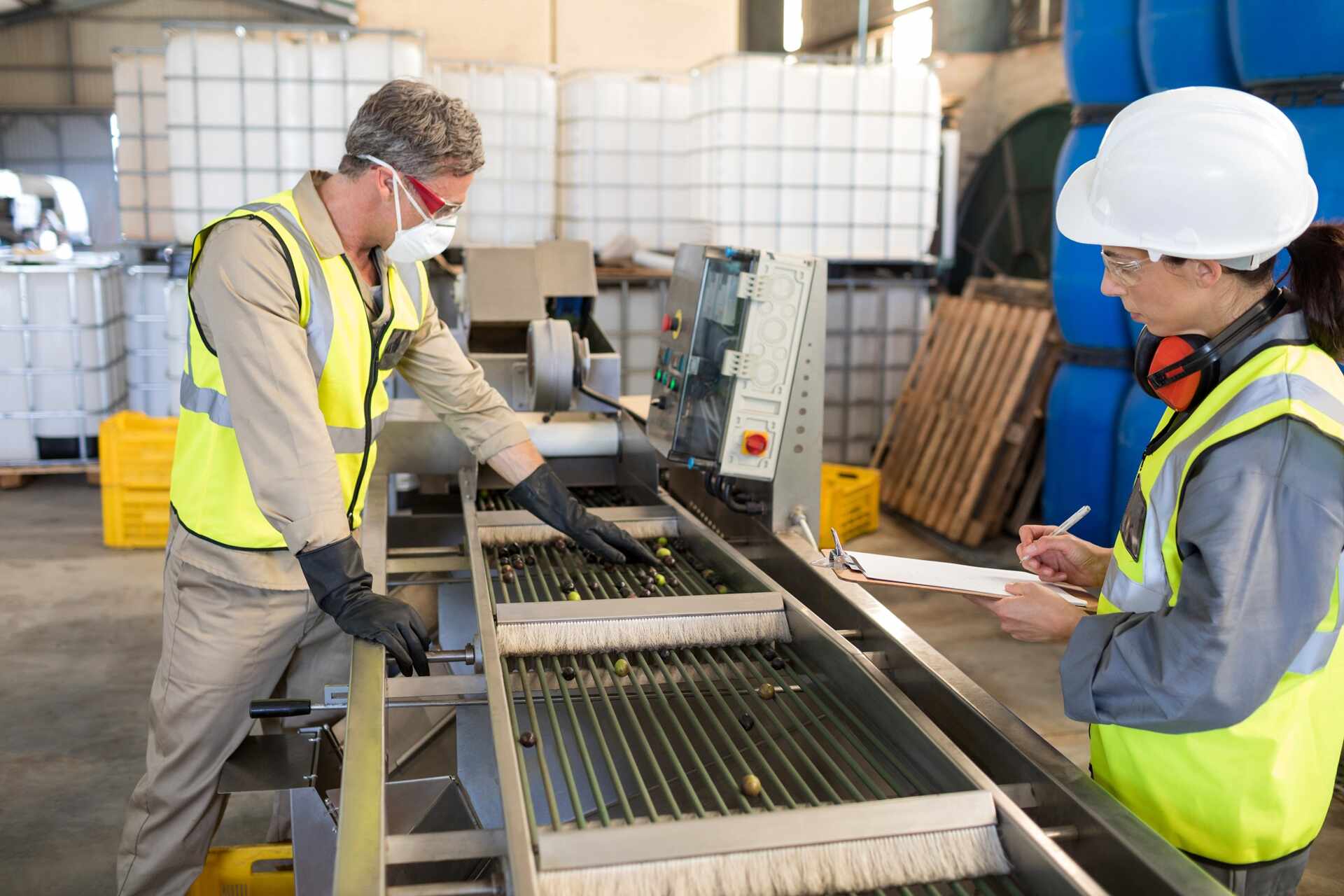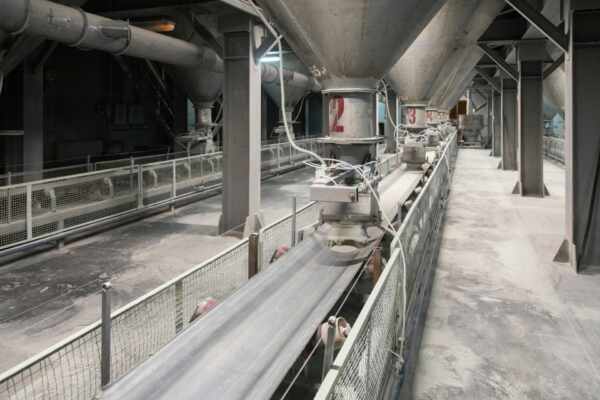In the competitive world of food manufacturing, every aspect of your production line has a significant impact on efficiency, productivity, and profitability. In this high-demand industry, your conveyor belt system plays a critical role in moving food products efficiently and hygienically throughout the manufacturing process. One of the most widely-used conveyor belt materials in food manufacturing is stainless steel – known for its durability, hygiene, and performance-enhancing properties.
Exceptional Durability and Corrosion Resistance
One of the most significant benefits of stainless steel conveyor belts in food manufacturing is their exceptional durability. Stainless steel is known for its long-lasting properties, offering resistance to corrosion, wear, and chemical damage. This makes it an ideal material for industries that require rigorous cleaning procedures and confront varying environmental conditions.
- The use of stainless steel belting can result in a longer-lasting conveyor belt system, reducing the need for frequent replacements and lowering overall costs associated with maintenance and downtime.
- Food manufacturing facilities often involve exposure to acidic or caustic products, and stainless steel demonstrates exceptional resistance to such corrosive elements, further extending the lifespan of your conveyor belt system.
Hygienic Properties and Food Safety
Another key advantage of stainless steel conveyor belts in food manufacturing facilities is their hygienic properties. Ensuring sanitary conditions throughout the entire food production process is crucial for maintaining food safety and quality standards. Stainless steel is a nonporous material that resists bacterial growth, facilitating easy and efficient cleaning.
- The smooth surface of stainless steel belting does not harbour food particles or bacteria, ensuring that your production line maintains compliance with hygiene regulations and food safety standards.
- Investing in stainless steel conveyor belts is a reliable strategy for minimising the risk of product contamination and protecting your business’s reputation.
Smooth, Nonporous Surface
Stainless steel conveyor belts offer a smooth, nonporous surface which is an essential feature in food manufacturing. This characteristic helps to prevent food from sticking to the belt, making transportation more efficient and reducing the risk of damage or spillage.
- The nonporous surface of stainless steel belts allows for easy release of food products, ensuring that your conveyor belt system transports goods efficiently and without damage.
- The smooth surface also helps to reduce product spillage and waste, further improving your facility’s overall efficiency and profitability.
Versatility and Customisation
Stainless steel conveyor belts provide flexibility in design and application, making them suitable for a diverse range of food manufacturing facilities and processes. This material is versatile, allowing for the creation of unique conveyor belt systems tailored to specific production requirements.
- Stainless steel belts can be engineered to incorporate various features, such as perforations for draining liquids or customised shapes to accommodate specific food products.
- This customisable aspect ensures that your conveyor belt system is precisely designed to cater to your facility’s unique needs, maximising productivity and streamlining processes.
How Stainless Steel Conveyor Belts Contribute to Cost Savings and Productivity
Long-Term Cost Savings
While the initial investment in stainless steel conveyor belts may be higher compared to alternative materials, the long-term cost savings can be considerable. Due to their durability, reduced maintenance requirements, and increased efficiency, stainless steel belts can ultimately lower your facility’s overall operating costs.
- The longer lifespan of stainless steel conveyor belts results in reduced replacement costs and downtime for maintenance.
- The hygienic properties of stainless steel belts minimise the risk of product contamination, reducing the potential for costly product recalls and damage to your business’s reputation.
Increased Productivity
Installing stainless steel conveyor belts in your food manufacturing facility can contribute to increased productivity by ensuring smooth, efficient, and hygienic processes. The nonporous surface, customisable design, and corrosion resistance all combine to create a conveyor belt system that maximises the throughput of your production line.
- The easy-release properties of stainless steel belts allow for a faster and more reliable flow of food products through your facility, increasing overall productivity.
- A well-maintained and hygienic conveyor belt system can contribute to a higher-quality end product, building consumer trust and a strong market reputation for your business.
Integration of Advanced Technology and Automation
In the fast-paced landscape of food manufacturing, the integration of advanced technology and automation is becoming increasingly vital for maintaining competitiveness and efficiency. Stainless steel conveyor belts serve as a foundational component for implementing innovative automation solutions that streamline processes and enhance overall operational performance.
- Stainless steel conveyor belts provide a robust platform for integrating automation technologies such as sensors, actuators, and robotic systems. These technologies can monitor and control various aspects of the production line, optimising throughput, minimising downtime, and ensuring consistent product quality.
- Advanced sensors embedded within stainless steel conveyor belts can detect anomalies in product flow, allowing for real-time adjustments to prevent bottlenecks or equipment failures. This proactive approach to maintenance helps maximise uptime and minimise costly disruptions.
- Robotic systems can be seamlessly integrated with stainless steel conveyor belts to automate tasks such as sorting, packaging, and palletising. By reducing reliance on manual labour for repetitive or physically demanding tasks, manufacturers can improve efficiency, reduce labour costs, and enhance workplace safety.
The compatibility of stainless steel conveyor belts with Industry 4.0 technologies enables connectivity and data exchange between different components of the production line. This interconnected ecosystem facilitates data-driven decision-making, predictive maintenance, and continuous process optimisation, ultimately driving greater efficiency and competitiveness in the food manufacturing sector.
A Worthy Investment for Food Manufacturers
In conclusion, the use of stainless steel conveyor belts within food manufacturing facilities offers numerous advantages in terms of durability, hygiene, versatility, and cost savings. By investing in this reliable and efficient solution, you can elevate your production line performance, ensuring your facility remains competitive and successful in an ever-evolving industry.
Consider incorporating stainless steel conveyor belt systems into your food manufacturing facility with Change Parts Pty Ltd. This long-term investment will ultimately pay dividends in the form of improved productivity, cost savings, and premium food safety standards.




